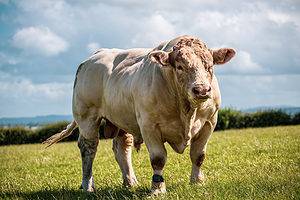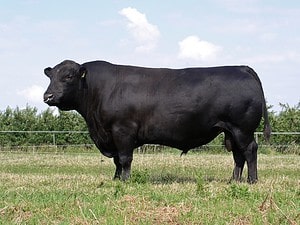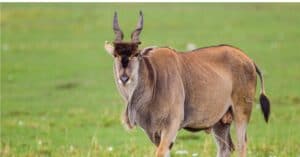Bull and cow are two terms that we often hear when discussing cattle. These members of the Bos genus are frequently differentiated by the simple observation that a bull is a male, and a cow is a female. While that is a good explanation, it is also a very simple one that fails to note the intricacies between these mammals. We’re going to take a closer look at the bull vs cow comparison and show you several ways in which these ruminants are different from one another.
Comparing a Bull vs Cow
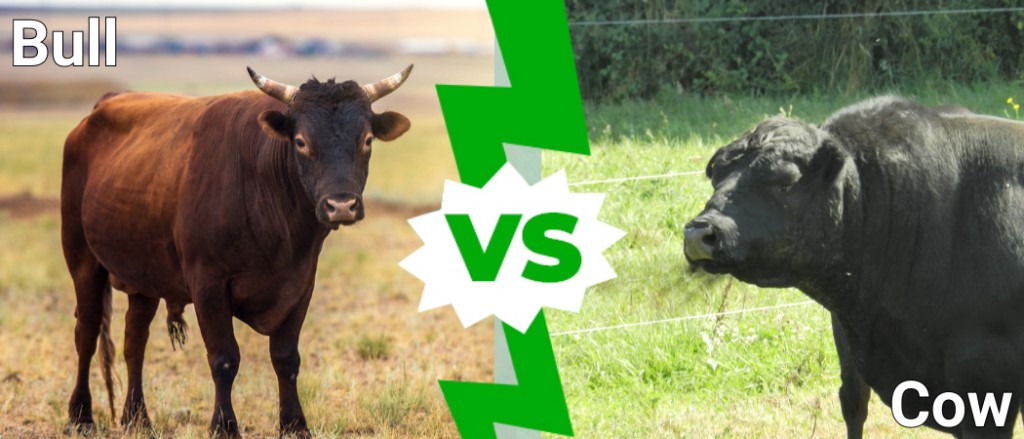
The 5 Key Differences Between a Bull vs Cow

Bulls are male, larger than cows, and tend to be a lot more muscular
©l i g h t p o e t/Shutterstock.com
The key differences between a bull and a cow are their sex, size, and morphology. Bulls are mature male bovines while cows are mature female bovines that have birthed at least one calf. Also, bulls are larger than cows because cattle are sexually dimorphic. Bulls have a lot more muscle mass and thicker bones, so they’re larger in terms of height and weight.
Bulls are known for having large, rounded shoulders with a hump along with a thick neck and a big head with a prominent brow ridge. Cows have udders, a wider midsection, and angular shoulders instead of rounded ones. These key differences help us differentiate these animals from each other.
Bull vs Cow: Sex
Bulls are male cattle and cows are female cattle. More specifically, bulls are male bovines that have reached the age of maturity, and cows are mature female bovines that have been bred at least once in their lives.
This is the greatest distinction between a bull and a cow.
Bull vs Cow: Size

Most bulls are larger and heavier than cows
©Laura Hedien/Shutterstock.com
Bulls are larger than cows. Bulls have their testicles left intact and they produce the hormones needed to reach their peak size. Thus, these mature male cattle are larger and heavier than cows on average. Cows are not exactly small, though. They’re larger than heifers and may be larger than male cattle that were castrated at a young age.
The average size range for cattle is between 5 and 7 feet long, 880lbs to 1,760lbs, and 4.5 to 5.5 feet at the shoulders. Bulls are far more likely to fall at the higher range of these measurements or even exceed them, ranging upwards of 2,000lbs or more. Of course, the size of the cattle depends on their species, too.
Bull vs Cow: Purpose
Bulls are raised to breed with cows and heifers and produce new cattle, and cows are raised to birth calves. Cows may also be used to generate milk for sale, or they might be slaughtered for meat. Bulls are not raised to be slaughtered for meat, though.
Bull vs Cow: Morphological
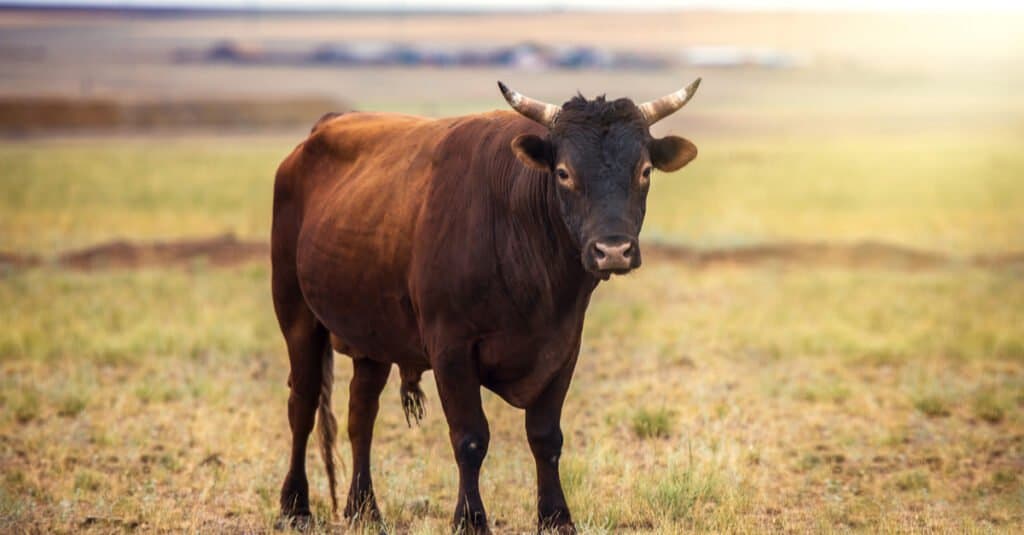
©Berezovaya Nonna/Shutterstock.com
The morphological differences between bulls and cows are numerous. Bulls are known for having a large head complete with a prominent ridge over their eyes, thick necks, a hump on their back or a very rounded shoulder, and a lot of musculatures.
Cows have a wider midsection and hips, the latter of which they gain from growing a calf inside of them and birthing it. Of course, these physical differences are complete with some elements of sexual dimorphism such as cows having udders and female reproductive organs. Bulls have their male reproductive organs left intact, and they can be prominent and easily distinguished from a cow’s udders and reproductive organs.
Bull vs Cow: Age
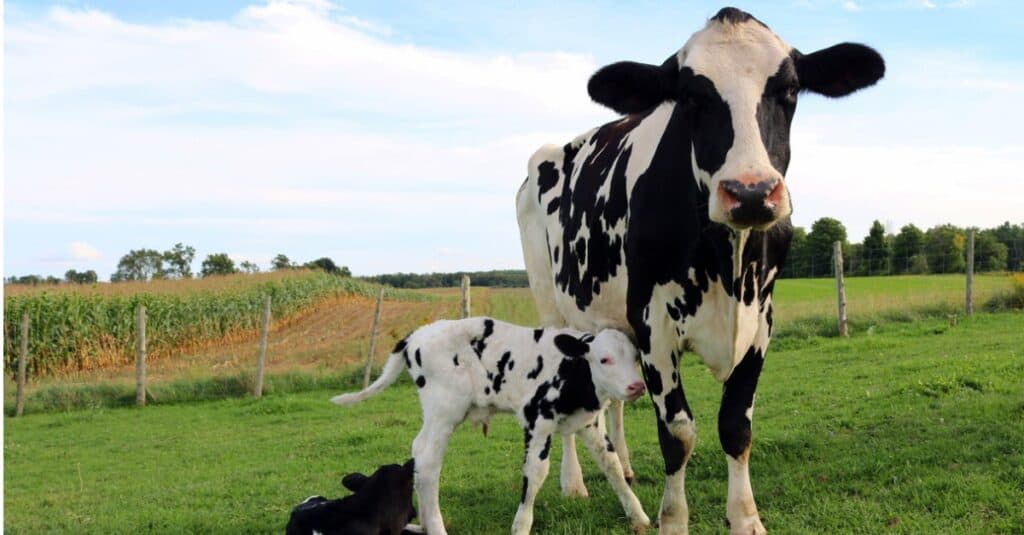
Cows are usually 2 years old at least whereas a male calf can become a bull before it is a year old.
©iStock.com/Diane Kuhl
By definition, a cow is a mature female bovine that has given birth to at least one calf. That means they are usually two years old or older when the heifer becomes a cow. Calves become bulls when they reach sexual maturity, a process that can start as early as one year into their lives. Thus, bulls are younger than cows when they reach that level of maturity.
However, the ages that farms will allow cows and bulls to begin breeding often differ and take into account the animals’ size and growth.
FAQs (Frequently Asked Questions)
What is the Difference Between a Bull and a Steer?
Bulls are male cattle that are raised to breed with cows and produce more cattle. However, steer are neutered male cattle that are raised for beef production. Another type of male cattle is called an ox. Oxen are castrated bulls that are used to work such as pulling carts or carrying heavy loads.
What Do Bulls Eat?
Like other ruminants, bulls will eat grass, silage, and leaves from different plants. Bulls’ teeth help them clip plants that are low on the ground and then chew them. From there, they will regurgitate the plants into cud. They will chew the cud again until it is ready for digestion.
Bulls that live on breeding farms may be fed a unique diet that will help them reach their physical peak without having to graze as much, or they may simply receive supplements for their food.
Where Do Bulls Live?
Bulls live on every continent on Earth except for Antarctica. It is believed that they originated somewhere in Europe, possibly Turkey, before being domesticated, bred, and spread throughout the known world. These animals are very popular for helping to expand herds.
Cattle are an incredibly popular species that are used for meat, milk, leather production, and more around the world. However, raising large herds of these animals can be problematic.
For example, herds of cows and bulls have been responsible for vast amounts of greenhouse gas emissions everywhere that they’re raised. One of the biggest challenges facing humans these days is how to reduce these emissions while satisfying consumers’ desire for inexpensive and tasty meat.
The photo featured at the top of this post is © David MG/Shutterstock.com
Thank you for reading! Have some feedback for us? Contact the AZ Animals editorial team.




